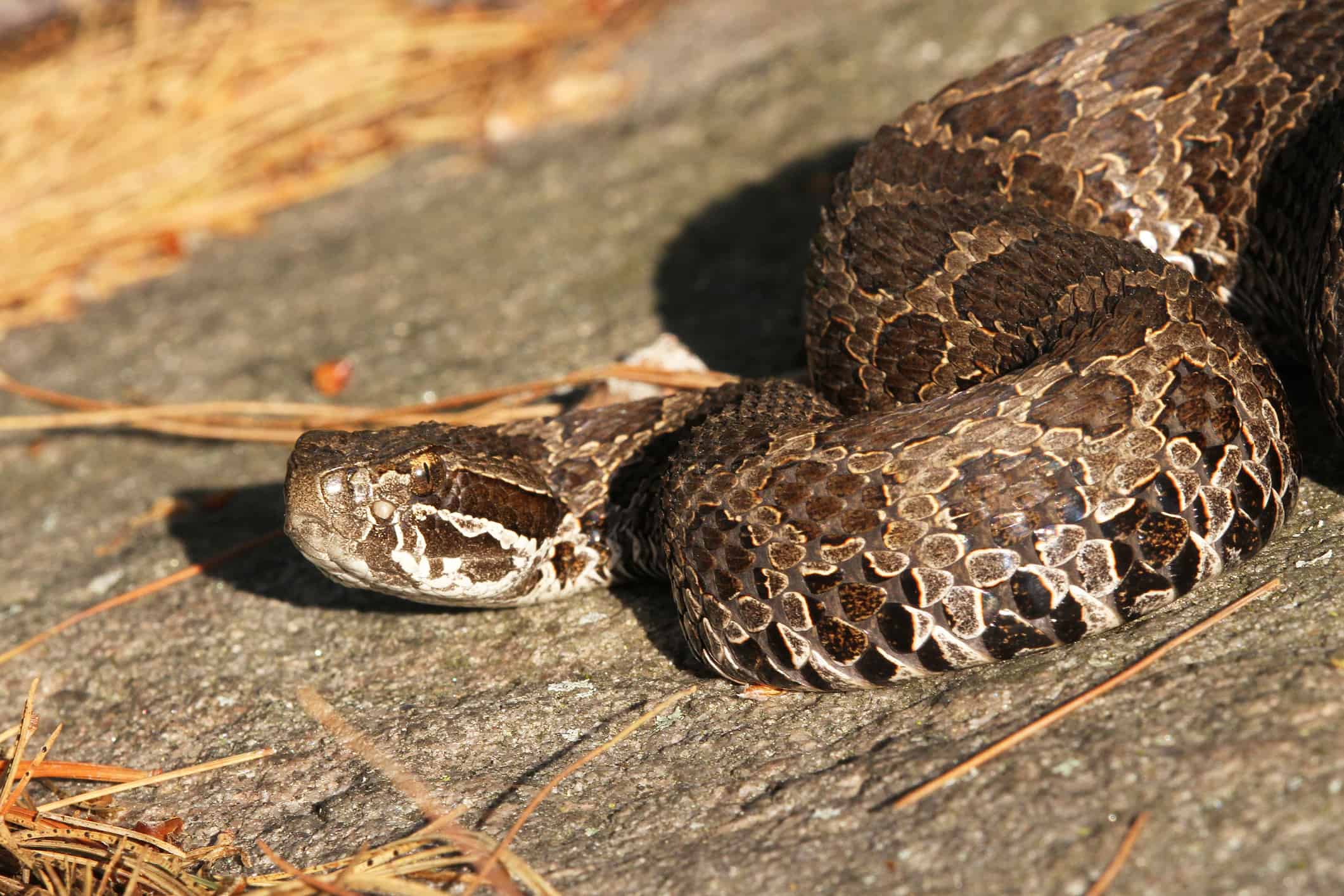Have you ever wondered just how long rattlesnakes can live? If so, you’re not alone. Discover the average rattlesnake’s lifespan, as well as features that can affect this, like predators. Plus, learn more about rattlesnakes as a whole!
Rattlesnake Lifespan: How Long Do Rattlesnakes Live on Average?
There are around 36 known species of rattlesnakes in the world, with many different subspecies. Each of these snakes may live in a different habitat than others or have a different diet. As a result, the lifespan of a rattlesnake can vary greatly.
Overall, however, the typical lifespan of a rattlesnake ranges between 10 to 25 years.
Young rattlesnakes are capable of surviving on their own shortly after birth, and they will undergo their first shed at around one or two weeks old. The age of sexual maturity varies based on both sex and species, with males reaching maturity faster than females. Overall, it can take 4 to 13 years for a snake to reach sexual maturity.
Lifespans and life cycles may also be different for snakes that live in captivity versus those that live in the wild.
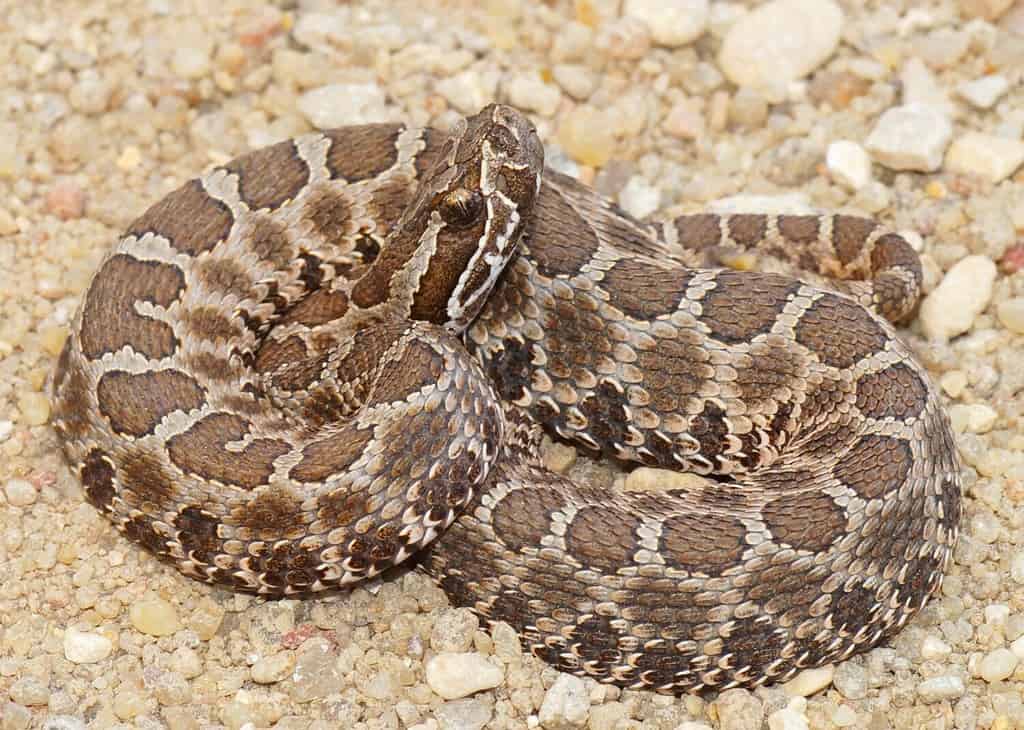
Rattlesnakes can live up to around 25 years in the wild.
©Matt Jeppson/Shutterstock.com
Rattlesnakes With the Longest Lifespan
Timber rattlesnakes have one of the longest rattlesnake lifespans. In the wild, these rattlesnakes can live up to 20 years. Other rattlesnake species with a similar lifespan include the prairie rattlesnake, the eastern diamondback rattlesnake, and the western diamondback rattlesnake. Pygmy rattlesnakes may also live to reach 20 years.
Other rattlesnakes, like the eastern massasauga, will have shorter lifespans than this species. However, with an average lifespan of around 18 years, the eastern massasauga still sports an impressive lifespan compared to rattlesnakes, with the shortest lifespans.
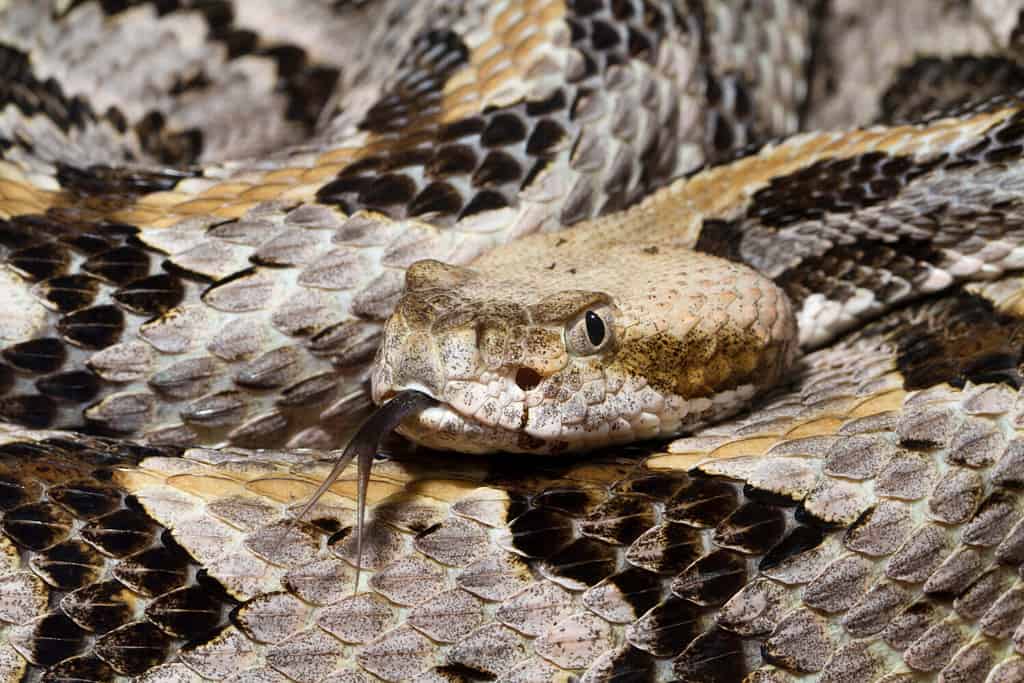
The highly venomous timber rattlesnake has one of the longest rattlesnake lifespans.
©Mark_Kostich/Shutterstock.com
Rattlesnakes With the Shortest Lifespan
One of the rattlesnakes with the shortest lifespans is the sidewinder rattlesnake. Males of this species may live well into their teens, averaging about 13 years in total. However, for females, this is not the case. Instead, female sidewinder rattlesnakes may live only to around 5 years old.
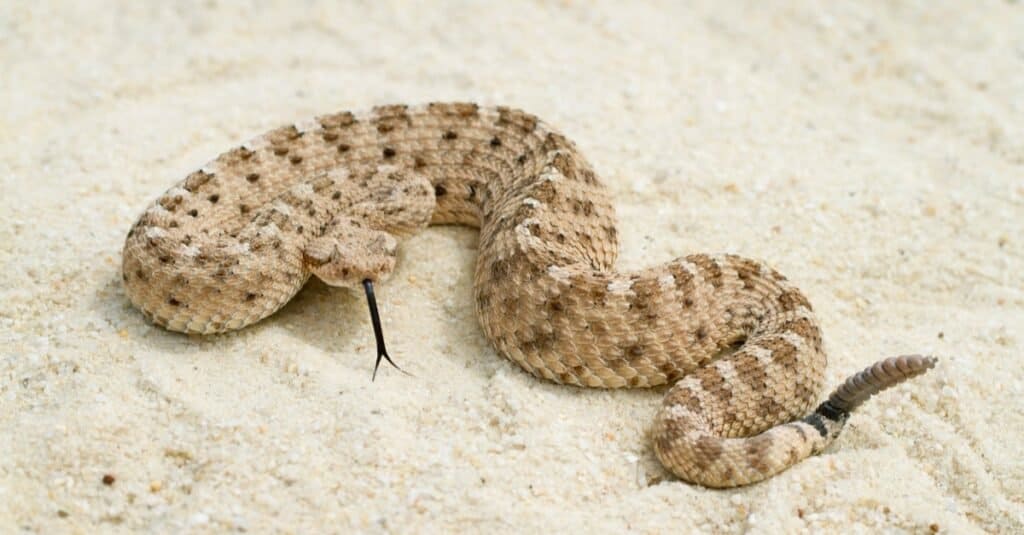
Female sidewinders have a lifespan of around 5 years.
©Mark_Kostich/Shutterstock.com
How Long Do Rattlesnakes Live in Captivity?
As you’ll learn further below, it can be difficult to live as a snake in the wild. Along with competition for resources with members of the same species, rattlesnakes must also contend with a variety of threats and predators. This includes humans.
As a result, snakes that live in captivity often have much longer lifespans than snakes that live in the wild. In captivity, rattlesnakes can reach ages well into their thirties.
One rattlesnake, Striker, lived to be 34 years old. Born in 1982, Striker had been a gift from one student to their biology teacher. The teacher cared for Striker until the snake’s death in 2015.
Rattlesnake Predators and Threats
In the wild, several different species of animals prey on rattlesnakes. Mammals such as coyotes, bobcats, and mountain lions, as well as birds like hawks and owls, and even other snakes, may act as predators for rattlesnakes. This is especially true for young rattlesnakes.
Humans may also pose a threat to snakes. Because rattlesnakes are highly venomous, humans are often afraid of them. This means that, sometimes, when a person sees a snake in their yard, they may be driven to kill it out of fear. While it is true that snakes can be dangerous, maintaining distance and not bothering the snake can keep both you and the snake safe. Many snake bites occur as a result of people interacting with wild snakes, which then increases the stigma surrounding these interesting creatures.
Species Profile: Rattlesnakes
Rattlesnakes are pit vipers that are in the genus Crotalus. These snakes are venomous; however, they are best known for their namesake rattle or rattlers. Along with using their unique and musical tails to warn away any potential threats, including humans, rattlesnakes may also hiss. The most venomous snake in North America is a rattlesnake: the eastern diamondback. However, the most venomous species overall is the Mojave rattler.
These snakes can be found in both North America and South America. Their exact habitat depends on the species. However, they may choose to inhabit everything from deserts to wooded ecosystems.
A rattlesnake’s rattle is made up of hollow keratin. This is the same protein that makes human fingernails or the center of bird feathers. The warning sound produced by these snakes comes from the empty keratin chambers knocking together as they vibrate their tailips. A snake’s rattle can be one way of aging a snake, although it isn’t always reliable. They grow a new segment with each shed. However, natural wear and tear or injuries can change the length.
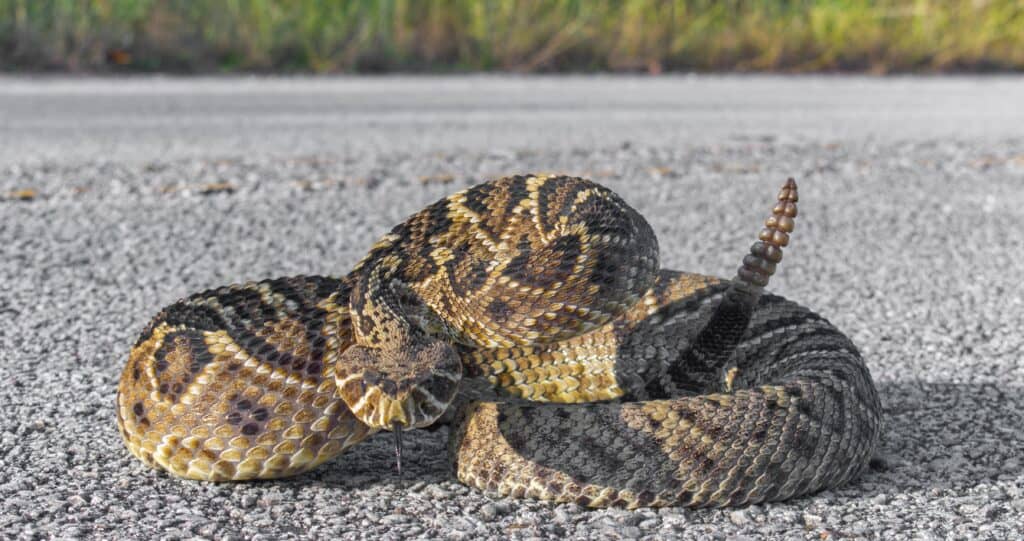
The rattle on a snake’s tail is made up of keratin.
©Chase D’animulls/Shutterstock.com
Discover the "Monster" Snake 5X Bigger than an Anaconda
Every day A-Z Animals sends out some of the most incredible facts in the world from our free newsletter. Want to discover the 10 most beautiful snakes in the world, a "snake island" where you're never more than 3 feet from danger, or a "monster" snake 5X larger than an anaconda? Then sign up right now and you'll start receiving our daily newsletter absolutely free.
Thank you for reading! Have some feedback for us? Contact the AZ Animals editorial team.

